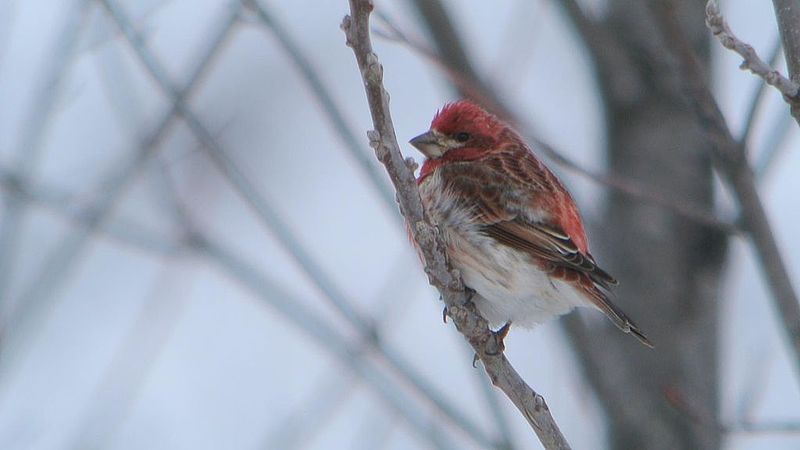Offer
Provide additional details about the offer you're running.
Provide additional details about the offer you're running.
Provide additional details about the offer you're running.

By Andy Reago & Chrissy McClarren (Purple Finch) [CC BY 2.0 (http://creativecommons.org/licenses/by/2.0)], via Wikimedia Commons
It’s that time of year again and for many of us birders, we are looking forward to the possible return of some of our favourite finch species to the southern regions of Canada and specifically, Ontario.
As consistent as the leaves changing each fall, Ron Pittaway releases his winter finch forecast each and every year based on findings, research and citizen science. In his annual report, he highlights individual species, expectations, and crop trends, providing readers with a general forecast for the coming winter.
After consuming information and data gathered from sources such as eBird, Pittaway tends to concentrate heavily on the Ontario region, which is even better news for local birders here in the Ottawa area.
When it comes to cone crops, the results in areas south of James Bay are relatively poor. Cone productions in Southern Ontario, Quebec, Atlantic Canada, New York, Vermont and New Hampshire are well below average. Up north, however, there is a good bumper across much of northern Canada and Alaska.
The unfortunate news is that Pittaway expects that many birds will ultimately have a difficult time locating natural food sources during the winter months here in southern Ontario, but that`s not to say we shouldn`t expect any visitors.

Hoary Redpoll. By dfaulder (Hoary Redpoll) [CC BY 2.0 (http://creativecommons.org/licenses/by/2.0)], via Wikimedia Commons
Purple finches are expected to arrive in droves because of poor seed crops on the majority of coniferous and deciduous trees in their northern breeding areas. Common redpoles and hoary redpolls are also expected to make an appearance this winter because of low birch seed crops. Expect them to be joined by pine siskins who were also already spotted heading south in early September.
We should also be treated to the unique sighting of evening grosbeaks as their budding population continues to flourish. These birds will be drawn to Ontario and Quebec`s outbreaks of spruce budworm.

Pine Siskin By Hvbirder (Own work) [CC BY 3.0 (http://creativecommons.org/licenses/by/3.0)], via Wikimedia Commons
There are a number of places nearby to sight winter finches, including Algonquin Park. For those not looking to travel, easily attract many of these species to your yard using either nyjer seed or black oil sunflower seed in your feeders this winter.
For more information and to read Ron`s full report, click here.
High Quality Blend